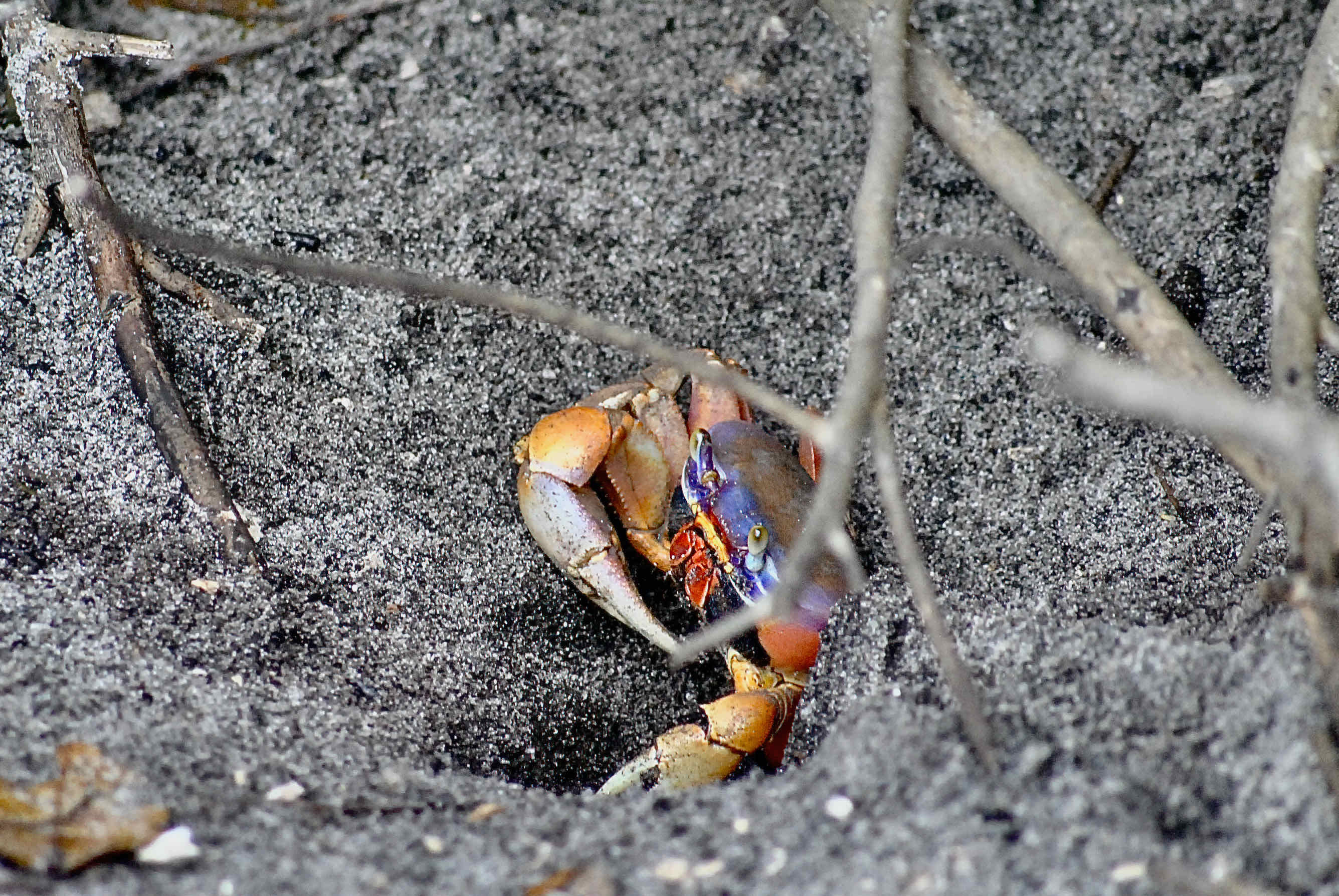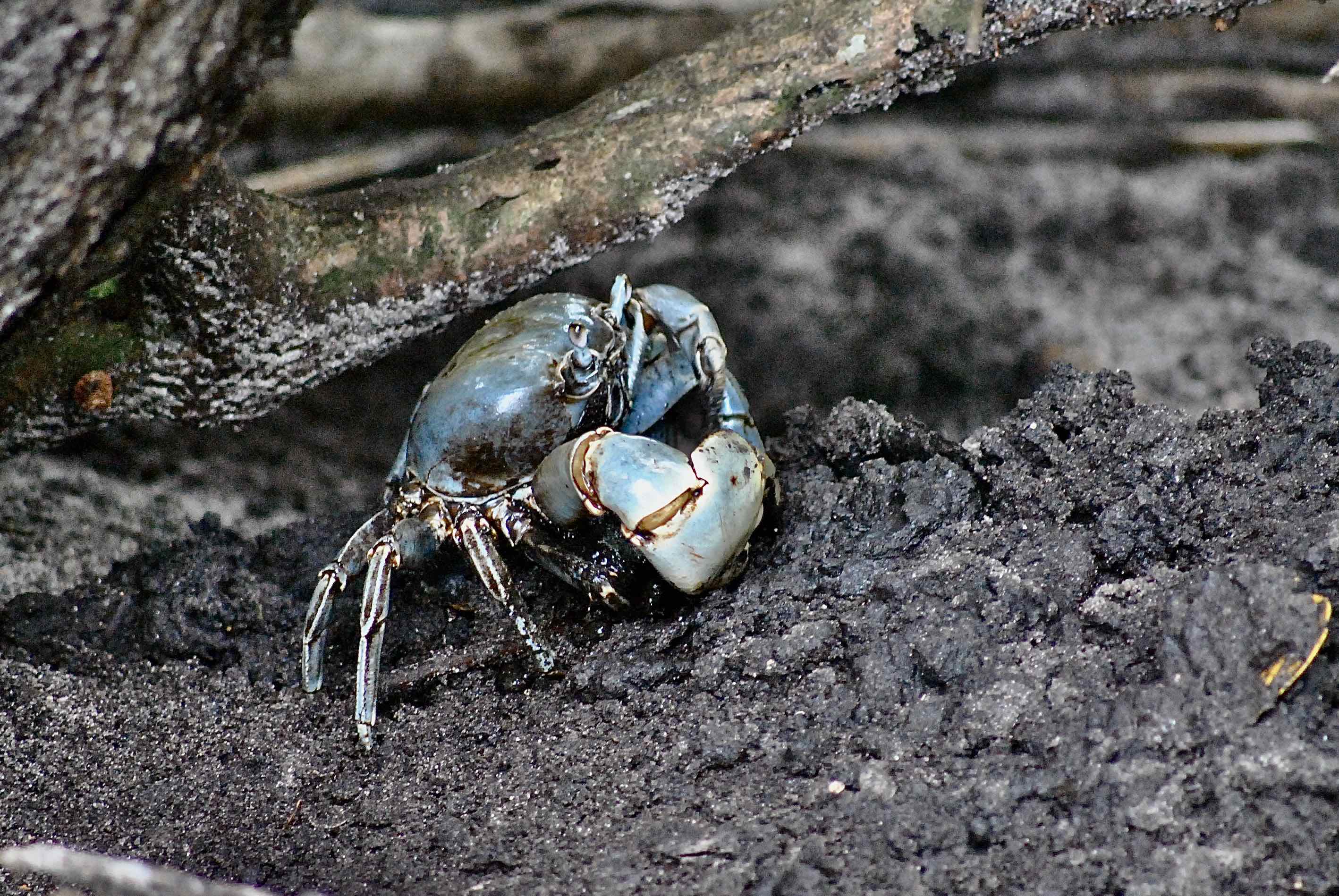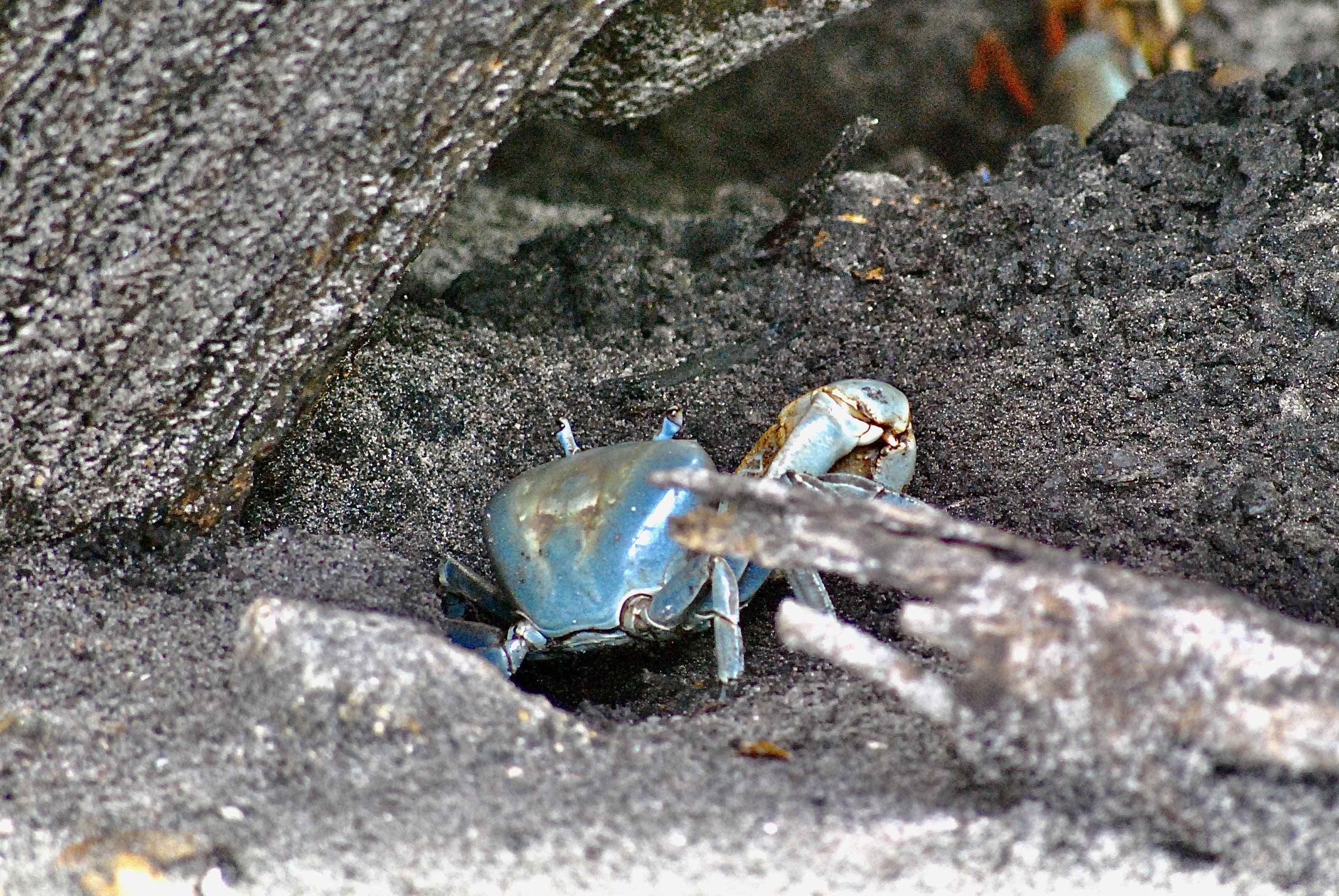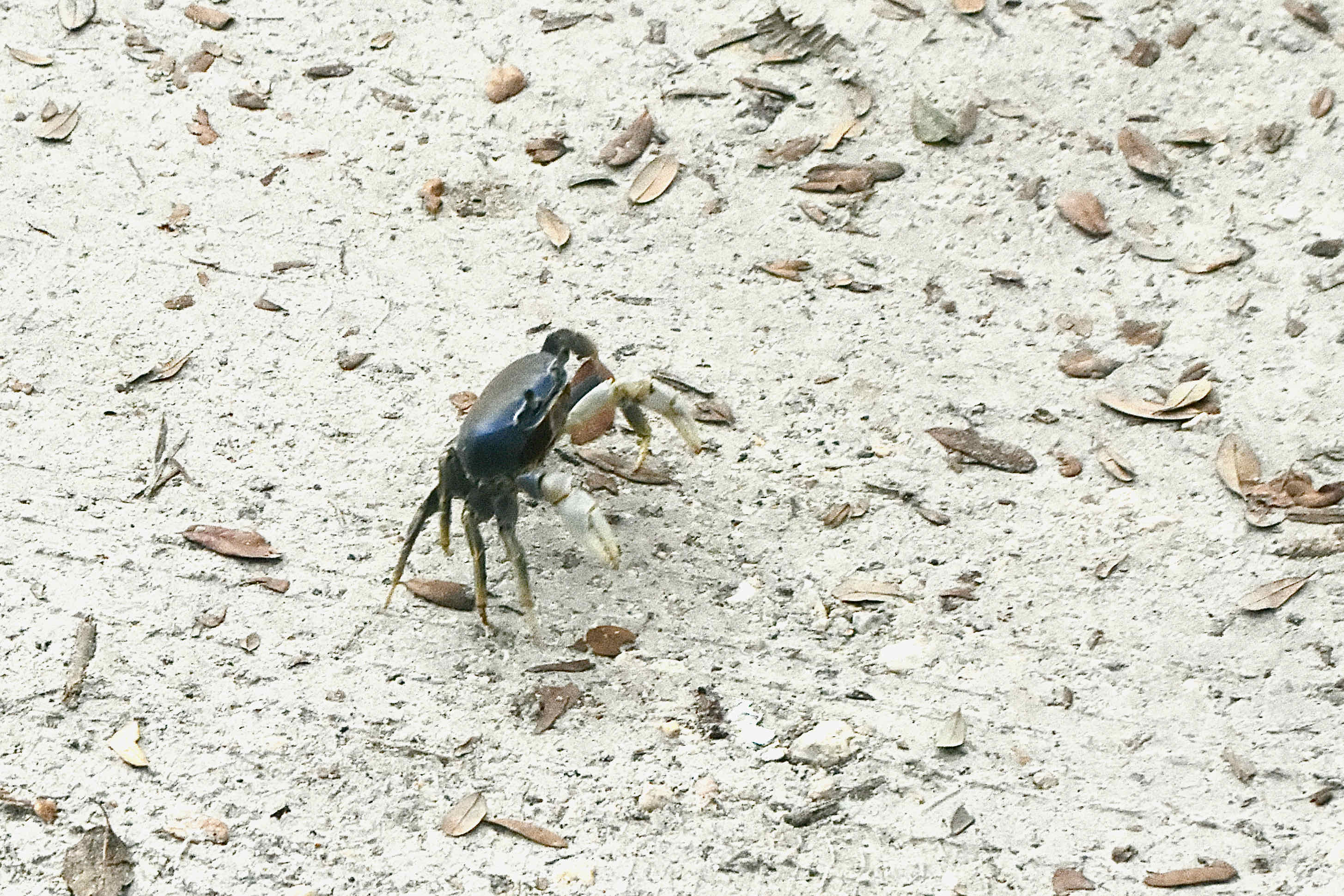
Blue land crab, photographed at Ocean Ridge Natural Area, Ocean Ridge, Palm Beach County, in August 2013.
Blue land crabs are Florida's largest semi-terrestrial crab. And a tasty meal for some. Scientifically, they're known as Cardisoma quanhumi. They can measure 6 inches across their carapace, or shell, and weigh more than a pound. By comparison, ghost crabs, another common semi-terrestrial crab inhabiting Florida, are about two inches across the back.
They are found in Bermuda, the Bahamas, through the Caribbean, South Florida and Texas. They are limited in their range by sensitivity to cold. They are particularly popular in the Caribbean, thrown in a pot with some seasoning, allegedly tasting a lot like the blue crabs found in Chesapeake Bay. But in some places, they're considered pests.
Blue land crabs are semi-terrestrial because they live part of their life cycle in the ocean, as larvae. As adults, they live on land, with females returning to the sea periodically to release their eggs. Blue land crabs burrow three to five feet deep — enough to let water seep in to moisten their crib — and they can be found as much as 5 miles inland. They don't need to live in water, but they do need to keep their gills damp in order to breathe. They are primarlly vegetarians but they will eat carrion (dead animals).
Blue land crabs have two antennae and two pincers, one of which is larger than the other. They vary in color from blue to violet, though females can be white or gray. Males are larger than females.
There can be as many as 7,500 blue land crab burrows per acre of land. If your lawn or garden lies within that acre, you probably don't feel too kindly to these guys. Otherwise, they're really no threat to humans.
Look at an adult blue land crab and you see a creature that's overcome huge odds to survive. Spawning season in Florida is June through December, roughly corresponding with the beginning of the rainy season, and peaking in October and November. A female will carry as 700,000 eggs per spawning under her belly for as long as 15 days until her offspring are ready to hatch.
Then, she'll make the long trek to the ocean to release them, in sync with the lunar cycle — full and new moons. During this migration, a female blue land crab will travel as much as 100 meters per hour, or as much as 500 meters per night. Remember, blue land crabs can live as much as five miles inland.
Almost all of her offspring will become meals for other creatures; those that survive to adulthood will go through five larval stages and one post larval stage before becoming actual crabs, a process that can take about 42 days. These juvenile crabs are brown rather than blue at this point; they will molt 60 times before becoming fully mature adults, which will take four years. During molting, they seal themselves in their burrows for as long as 10 days. Not a lot is known about the lifespan of the blue land crab, but one estimate we've seen says 11 years is typical.
Adult blue land crabs don't have a lot of natural enemies because of their size. A few mammals will pick some off as will a few birds and even other blue land crabs. However, humans are their biggest predatory threat by far.
In fact, there's some evidence that where blue land crabs are popular menu items, their numbers are dwindling. They are particularly vulnerable during spawning when it's possible for one person to catch hundreds of crabs in a single evening. The Florida Fish and Wildlife Conservation Commission has set up a series of regulations to protect the species. For one, to catch them you need a license, and the possession limit is 20 crabs. The season is restricted to Nov. 1 through June 30, and it's illegal to catch egg-bearing crabs or to strip them of their eggs. It's also illegal to catch them in any state park, or within the right-of-way of any federal, state or county-maintained road. (Note: These rules might have changed since publication and other rules and regulations might have been enacted. Contact the FWC for more info. Also note: we don't have information on where to go to hunt these crabs.)
Blue land crabs are also known as giant land crabs, Abacos land crabs and great land crabs. They are members of Gecarcinidae, a family of crabs adapted to life on land.
Ocean Ridge Natural Area



